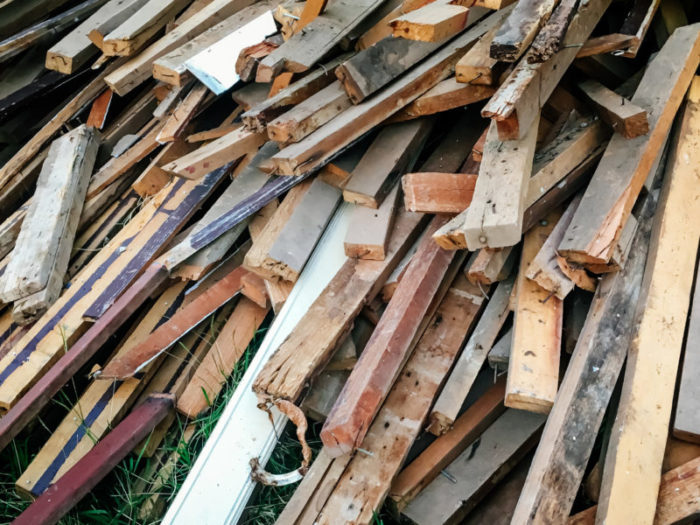According to the Technology Strategy Board, the construction, operation and maintenance of the built environment are responsible for 45 percent of the UK’s total carbon emissions. Of which, 27% is from domestic buildings and 18% from non-domestic buildings. The UK Green Building Council states that about 10% of the UK’s carbon dioxide (CO2) emissions are a direct result of construction.
Here are 6 ways that construction companies can reduce their carbon footprints and save considerable amounts of money in the process. Allowing our planet to have a future.
Go Paperless
Companies spend large amounts of their budgets on paper for blueprints, invoices, tender documents, design drawings, daily reports and timesheets to name a few. Going digital eliminates the need for paper altogether. Today with technology being so advanced there are construction software and document management solutions readily available. And with tablets and mobile devices, you can travel with all the documentation at all times, allowing for easy accessibility.
By going digital you are able to receive real-time updates and views of documents, plans and activities and are able to make faster and better decisions. It improves efficiency and reduces costs because there is no need to look for lost documents and reprint or have multiple copies of documents.
Transport
The construction industry relies heavily on transportation, whether it is trucks transporting loads of materials or smaller utility vehicles used for site visits, without transportation, construction companies just don’t run. Construction companies should, therefore, economize their transportation fleets. Older and less fuel-efficient vehicles should be replaced with newer vehicles that are in better working condition, have better fuel economy and are overall more environmentally friendly. This reduces overall running costs and fuel costs for the company too.
Companies should also try to source materials locally. This decreases the travel time and distance on deliveries which means fewer emissions. Order collections should be maximized as much as possible. Where possible a company should order as much as they can at one supplier, therefore not needing to go to multiple suppliers for supplies. This requires paying closer attention to detail when placing orders, to avoid unnecessary trips. Trucks should also wait for a full load, avoiding unnecessary trips that are only half full of supplies. Besides decreasing on emissions it also saves on fuel and wears and tear costs.
Rainwater Collection
Water is another huge cost to construction sites. A lot of water used on-site doesn’t need to be potable water. Potable water is water that is suitable for drinking. Flushing toilets, irrigation, keeping concrete slabs wet while curing, and mixing concrete all these can make use of rainwater. Sites that put up effective rainwater collection facilities are able to use the water collected and save on water costs as well as use less potable water.
Rainwater collection along with better stormwater drainage will lead to less on-site and next to site washaways. Washaways are a huge detriment to the environment and destroy the natural vegetation surroundings leading to an increase in carbon dioxide in the air. Better storm water drainage and rainwater collection will mean a lower volume of water moving off-site.

Equipment Management
Keeping a well-maintained plant or machinery is the key to lower carbon emissions. If machines are serviced regularly and are running well, they are not burning as much oil or producing as many noxious fumes, along with lengthening their life span. Well serviced and well-maintained machinery is also more fuel-efficient and therefore more cost-effective. This can be improved upon even more by opting to use low carbon fuel.
Choosing the right machine for the right task is also vital. In other words, don’t use oversized machinery. Make sure you are using the right sized machine instead of one that is too large for the job; this not only costs less but produces fewer emissions. Training your machine operators how to operate the machinery efficiently is also important, focusing on less idle time and appropriate power usage. This will lead to fewer expenditures as well as improve the life of machinery and on-site safety.
Waste Management
Most construction waste is sent to landfills, but when simply using the right processes and services, waste material can be recycled. Construction companies need to take the 3 R’s; reduce, reuse and recycle, into consideration for waste management. Reducing over order, which minimises waste, and reusing as much material as can be salvaged from existing structures and previous works. Finally, if the material cannot be reused then recycling it for use somewhere else.
The use of compactors, crushing waste material down so that there are fewer collections needed to remove what waste cannot be reused or recycled can also improve the environmental impact construction projects cause. Stone and old concrete can be crushed down and used as aggregates, while metal and wire can be melted and remoulded into new metal fixtures. Recycled steel reduces mining waste by 97%, air pollution by 86% and water pollution by 76%. The good news is steel is 100% recyclable. All and any used construction steel, be it reinforcement mesh or prefabricated pile cages, can be recycled.

Sustainable Material
More and more companies are looking at sources for sustainable material, besides sourcing locally. Cement production is responsible for nearly half of the industry’s carbon dioxide production both in the energy needed to make it and as by-product fumes of the chemical reactions from the manufacturing of it. Alternative options are using low carbon cements which are less energy-intensive to manufacture.
While some companies may look at bio concrete, others are looking at using more natural products like straw, wood and compressed soil. These products actually absorb carbon dioxide instead of emitting it and use less energy to manufacture.
In Conclusion
There are many more ways that construction companies can reduce their carbon footprint. Luckily a lot of these methods that can be implemented also mean a reduction in costs, which is an added bonus. Reducing your company’s carbon footprint can actually save you time and money while you are doing your part for the environment.